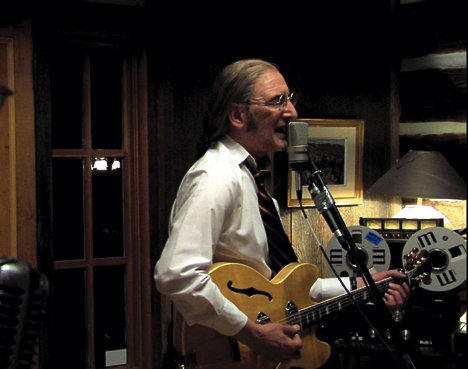You are using an out of date browser. It may not display this or other websites correctly.
You should upgrade or use an alternative browser.
You should upgrade or use an alternative browser.
Photos from Alternate Worlds II (read FAQ first)

Sultân Osmân-ı Evvel, Reşadiye, and Fatih Sultan Mehmed at Iskenderun in 1918. The efforts of the Ottoman state to rejuvenate itself through popular support of the navy has been very successful. A 4th battleship inline with the 1909 Program has just been ordered for delivery in 1920. The projected 5th and 6th ships are scheduled for 1923.
The revival of Ottoman naval power - Following the proclamation of the Second Constitution in 1908, efforts to revive the state and its institutions and a desire to regain great power status gained momentum. Views on naval power shifted to a more positive direction where both rulers and the public saw the navy not as a burden or threat but rather as a means for political and social rejuvenation just as it was in other countries at this time. The Navy became a means for Ottoman subjects to mobilise around a patriotic cause. On July 14, 1909, a group of influential merchants led by Yağcızade Şefik Bey founded the “Navy Association” (Donanma Cemiyeti) set out a slogan 'Navy is Life' and aimed to raise funds among the citizens and support the government’s efforts to purchase new battleships. Taxes on matches and cigarette papers were directly channeled to the Navy Association, which was also allowed to organize lotteries and collect special donations during religious holidays. Through these measures, the Navy Association was providing about 952,500 TL (Turkish lira) per year (about £1,047,750).
Here are two version of a photograph taken shortly after a brave battalion of British soldiers successfully took the island of Iwo Jima from Japanese control. This success would prove a major turning point of the Pacific theatre of WWII for the British as they now held a strategic hopping off point to attack the main Japanese islands.


The second of these photographs is slightly more plausible as OTL's famous Iwo Jima photo was heavily influenced by the unique vision of American photographer, Joe Rosenthal.
The second of these photographs is slightly more plausible as OTL's famous Iwo Jima photo was heavily influenced by the unique vision of American photographer, Joe Rosenthal.
This has definitely been posted before.Noted British-American crime boss Winston Churchill, inspecting troops from his own personal army based in New York during the Second American Civil War.
This is an edited and improved version of a previous post from Photos from Alternate Worlds.
Although the Japanese had taken much of the West Coast, the United States remained stubborn and vowed to not surrender to Japan. But that all changed when a new Japanese ultra-long-range heavy bomber, the Nakajima G10N, dropped a new devasting bomb on both Dallas and Detroit...that bomb was the atomic bomb. The bomb was in fact being worked on by the Americans themselves, the Americans' atom bomb project was code named "the Manhattan Project", but the work was immediately halted as Japanese forces got dangerously close to the research and testing sites out west - the orders to dismantle the project were given and carried out.*
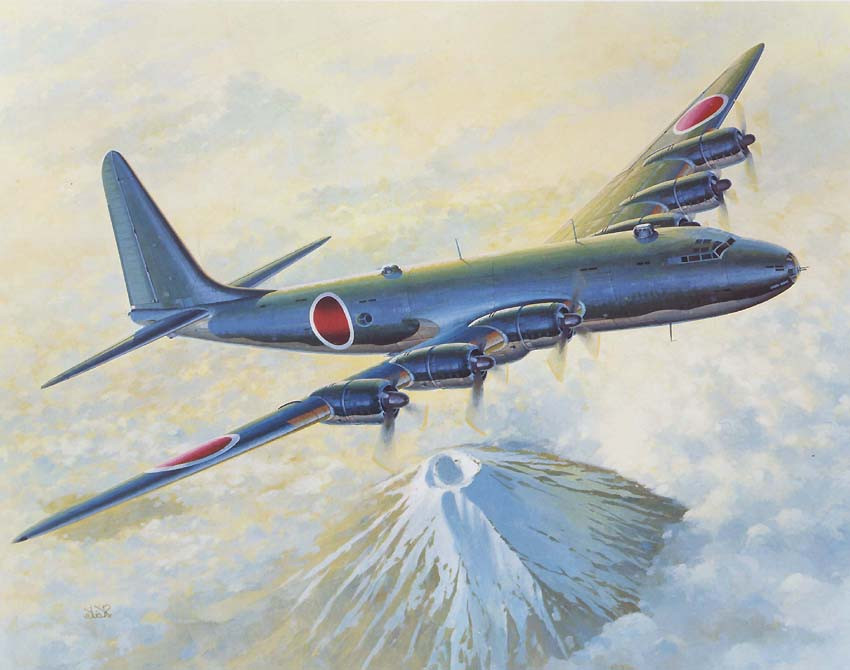
An artist’s depiction of a Japanese Nakajima G10N ultra-long-range heavy bomber like the one that dropped the atom bomb on Dallas and Detroit.

Japan’s secret atomic bomb project bores fruit with the dropping of the 'Amaterasu' on the American city of Dallas on 30 July 1946, followed by the dropping of a second atomic bomb called the 'Susanoo' on Dertroit on 1 August 1946.
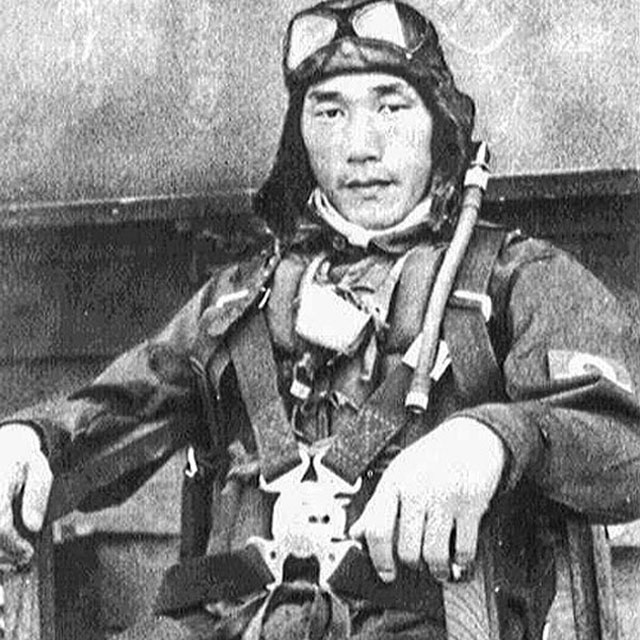
Nobuo Fujita, a pilot of the Imperial Japanese Navy Air Service. He flew the Nakajima G10N that dropped the atomic bombs on Dallas and Detroit.

Units of the Japanese Kwangtung Army celebrate the atomic bombings of Dallas and Detroit at San Francisco Bay (in the background is Alcatraz Island).
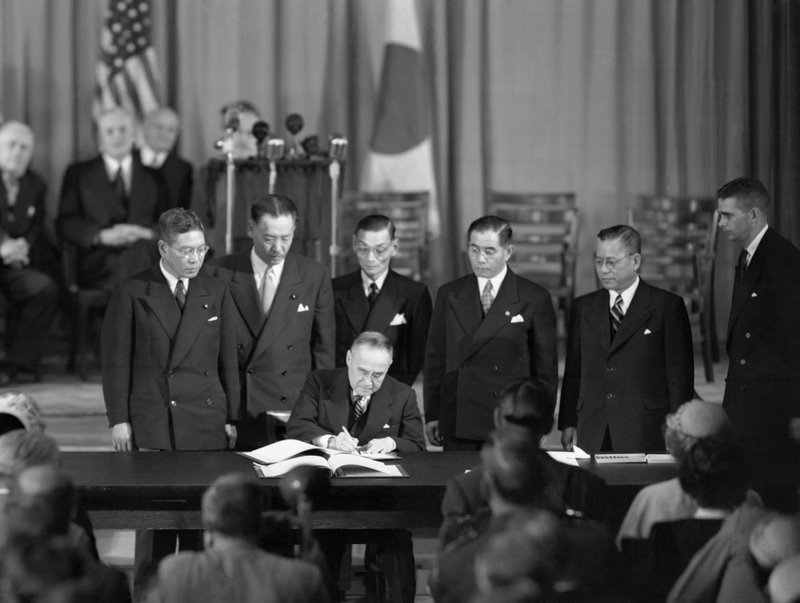
U.S. President Harry S. Truman signs the Japan-America Peace Treaty aka the Treaty of San Francisco, after the Japanese delegation already signed it, on 5 August 1946 after the nuking of Dallas and Detroit, ending the Japan-America War aka the Pacific War.

Emperor Hirohito and Empress Kōjun lead a crowd of 15,000 Japanese civilians and soldiers in a banzai cheer to celebrate the Empire’s victory over the United States.
The treaty was harsh; it forced the United States to become nothing more than a vassal to the victorious Empire of Japan while also signing away all U.S. territory west of the Rocky Mountains to Tokyo which became the Imperial East Pacific Territories (later reorganised into the Pacific States of America or PSA - a glorified puppet state taking direct orders from Tokyo). The American South was also broken up into multiple puppet states such as the Republic of Texas and the Commonwealth of Virgina - this left the United States with only the Midwest, the Great Lakes Region, and everything north of the Mason Dixon line. There was an original plan proposed by some in the Japanese government and military to break off the South and reform the Confederate States of America, however that plan was quickly slapped down by none other than the living god himself Emperor Hirohito of the Yamato Dynasty.
To add further insult to injury, America was forbidden to have submarines, it’s air force (the US Army Air Corps) was to be greatly reduced in size, and it was to significantly reduce its naval capabilities (to the point that the U.S. Navy became a glorified coastal defence force), and finally to reduce the size of its army. The country’s manufacturing capabilities were to be monitored by agents of the Kempeitai and Japanese conglomerates, the Zaibatsu, were allowed free reign in the rump U.S. and could set their prices there as they saw fit (this also applied to the new nations of the American Southeast - collectively known as the Antebellum States). The Kempeitai were also allowed to report any and all suspicious activities inside American manufacturers to Tokyo without telling the American government first or even at all.

Japanese soldiers (in ceremonial dark blue uniforms) marching in a victory parade in Honolulu, Hawaii as Japanese civilians there show their support and celebrate the empire’s victory.
* = That was the official story by the Japanese government. In truth a near mythical assassination and spy organisation known only as the Killer7 kidnapped American scientists/engineers, assassinated key or high ranking figures linked to the project, committed acts of sabotage, and much more over the years prior to the invasion of America.
The End of the War and America’s Humiliation
Although the Japanese had taken much of the West Coast, the United States remained stubborn and vowed to not surrender to Japan. But that all changed when a new Japanese ultra-long-range heavy bomber, the Nakajima G10N, dropped a new devasting bomb on both Dallas and Detroit...that bomb was the atomic bomb. The bomb was in fact being worked on by the Americans themselves, the Americans' atom bomb project was code named "the Manhattan Project", but the work was immediately halted as Japanese forces got dangerously close to the research and testing sites out west - the orders to dismantle the project were given and carried out.*

An artist’s depiction of a Japanese Nakajima G10N ultra-long-range heavy bomber like the one that dropped the atom bomb on Dallas and Detroit.

Japan’s secret atomic bomb project bores fruit with the dropping of the 'Amaterasu' on the American city of Dallas on 30 July 1946, followed by the dropping of a second atomic bomb called the 'Susanoo' on Dertroit on 1 August 1946.

Nobuo Fujita, a pilot of the Imperial Japanese Navy Air Service. He flew the Nakajima G10N that dropped the atomic bombs on Dallas and Detroit.

Units of the Japanese Kwangtung Army celebrate the atomic bombings of Dallas and Detroit at San Francisco Bay (in the background is Alcatraz Island).

U.S. President Harry S. Truman signs the Japan-America Peace Treaty aka the Treaty of San Francisco, after the Japanese delegation already signed it, on 5 August 1946 after the nuking of Dallas and Detroit, ending the Japan-America War aka the Pacific War.

Emperor Hirohito and Empress Kōjun lead a crowd of 15,000 Japanese civilians and soldiers in a banzai cheer to celebrate the Empire’s victory over the United States.
To add further insult to injury, America was forbidden to have submarines, it’s air force (the US Army Air Corps) was to be greatly reduced in size, and it was to significantly reduce its naval capabilities (to the point that the U.S. Navy became a glorified coastal defence force), and finally to reduce the size of its army. The country’s manufacturing capabilities were to be monitored by agents of the Kempeitai and Japanese conglomerates, the Zaibatsu, were allowed free reign in the rump U.S. and could set their prices there as they saw fit (this also applied to the new nations of the American Southeast - collectively known as the Antebellum States). The Kempeitai were also allowed to report any and all suspicious activities inside American manufacturers to Tokyo without telling the American government first or even at all.

Japanese soldiers (in ceremonial dark blue uniforms) marching in a victory parade in Honolulu, Hawaii as Japanese civilians there show their support and celebrate the empire’s victory.
Last edited:
A sketch of Sir Donald Campbell, the first man to break the sound barrier on land and the only man to hold both the land speed and water speed records with his Mach 1 Bluebird; Chief Mechanic Leo Villar and co-designer Ken Norris.
Campbell, his legacy secure, retired from record breaking as the 1960s became the 70s and became a KBE in the first honours list of that decade.
Without the purpose that had driven him since his father’s death in 1948, Campbell led a peripatetic life through much of the 70s with his wife Tonia, briefly moving to the US before settling in the Lake District. The 80s brought a renewed focus however when he was recruited first as a technical advisor and then as Performance Director to the 1000 Project which attempted to push the land speed record into for figures. The car, designed like the Mach 1 Bluebird by the Norris brothers, needed a driver and although Campbell initially accepted, he later demurred, supporting Richard Noble who did pilot the vehicle through the 1000mph barrier.
In later life injuries from Campbell’s record breaking began to catch up with him, and a fall at home on Boxing Day 2002 broke his hip. Thereafter confined to a wheelchair, he died in the summer of 2006 at 85, survived by daughter Gina and third wife Tonia.
Here are two portraits of the famed Virginian President, Abraham Lincoln.
The first portrait is of Lincoln days after his election as president of the Commonwealth of Virginia. A controversial event due in part to both being a relative outsider (as he lived most of his life deep in the wilderness of the Virginian Ohio Territory and only his earliest years in Kentucky) and being the first of the firmly abolitionist party, the Liberty Party, to win the presidency.

The second portrait is a much more tattered Lincoln(yet still dapperly shaven) after a long and tumultuous war presidency against a secessionist faction in greater Kentucky who rose up not long after the former portrait was done. Despite being faced with such a humbling task, Lincoln famously retorted "A house divided cannot stand" and thus worked tirelessly(visibly with the expense of his own physical health) to reunite the state and begin the steady process of emancipating the slaves of greater Kentucky.

The first portrait is of Lincoln days after his election as president of the Commonwealth of Virginia. A controversial event due in part to both being a relative outsider (as he lived most of his life deep in the wilderness of the Virginian Ohio Territory and only his earliest years in Kentucky) and being the first of the firmly abolitionist party, the Liberty Party, to win the presidency.
The second portrait is a much more tattered Lincoln(yet still dapperly shaven) after a long and tumultuous war presidency against a secessionist faction in greater Kentucky who rose up not long after the former portrait was done. Despite being faced with such a humbling task, Lincoln famously retorted "A house divided cannot stand" and thus worked tirelessly(visibly with the expense of his own physical health) to reunite the state and begin the steady process of emancipating the slaves of greater Kentucky.
The Honourable Gentleman for Burton: To ask the Minister of Defence the current use of the sea forts in the Thames and Mersey estuaries and the plans for their future.
The Minister of Defence: My honourable friend will know the history of the forts and those that are operated by both the Army and the Navy. Government policy is to, obviously, make the most of existing materiel where possible and we are in discussions with all the relevant services on the future of sea forts. But I can inform the House of the intention to convert Shivering Sands Army anti aircraft fort to the use of guided weapons by the end of next year. The fort will increase the reach of our air defences significantly. Once this work is complete the fort will managed and maintained by Air Defence Command.
I must also tell the house that Nore and Red Sand forts, Army manned, will be dismantled once Shivering Sands is operational with guided weapons. The new capability will negate the need for additional forts. The future of the naval forts will be considered in the new year.
Last edited:
First paragraph originally posted by @Historyman 14. The title and the rest is originally mine.
In spring of 1949 Japan dusted off the 'Back to Africa' movement and offered African Americans a greater and better future in places such as Liberia, Sierra Leone, and the Congo, among others. The African-American émigrés would become the upper class of these new nations, or in Liberia’s case become part of the existing upper class of Americo-Liberians. This set the seeds for groups such as the Black Power Front in Sierra Leone, and the Black Cheetah Party in Zaire as millions of African Americans left North America.

Mobutu Sese Seko. Mobutu is a Congolese general, founder of the Afro-fascist Black Cheetah Party (filled with African-American émigrés, called Americo-Congolese, and members of his own ethnic group the Ngbandi people), and dictatorial strongman of Zaire.
In 1957, President Patrice Lumumba of the Democratic Republic of the Congo had a falling out with Tokyo due to a disagreement over the Katanga province - some Japanese zaibatsu wanted to exclusively exploit the mineral deposits in the province and Lumumba outright refused.
He was killed in a Japanese-backed coup d'état by Mobutu, his Black Cheetah Party, and the pro-Japan Congolese military (the military got a majority of its weaponry from Tokyo). Mobutu then gave the zaibatsu free reign in Katanga for a cut of the profits. In 1970, Mobutu would change the country's name to the State of Greater Zaire and proceeded to forcefully annex the Kingdom of Rwanda, the Republic of Burundi, and the Central African Empire.

Members of the Black Mambas, the paramilitary group of Mobutu's Black Cheetah Party or BCP for short.
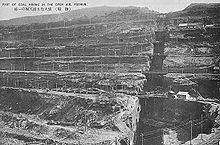
A Zaibatsu mining operation in Katanga Province, circa 1958.
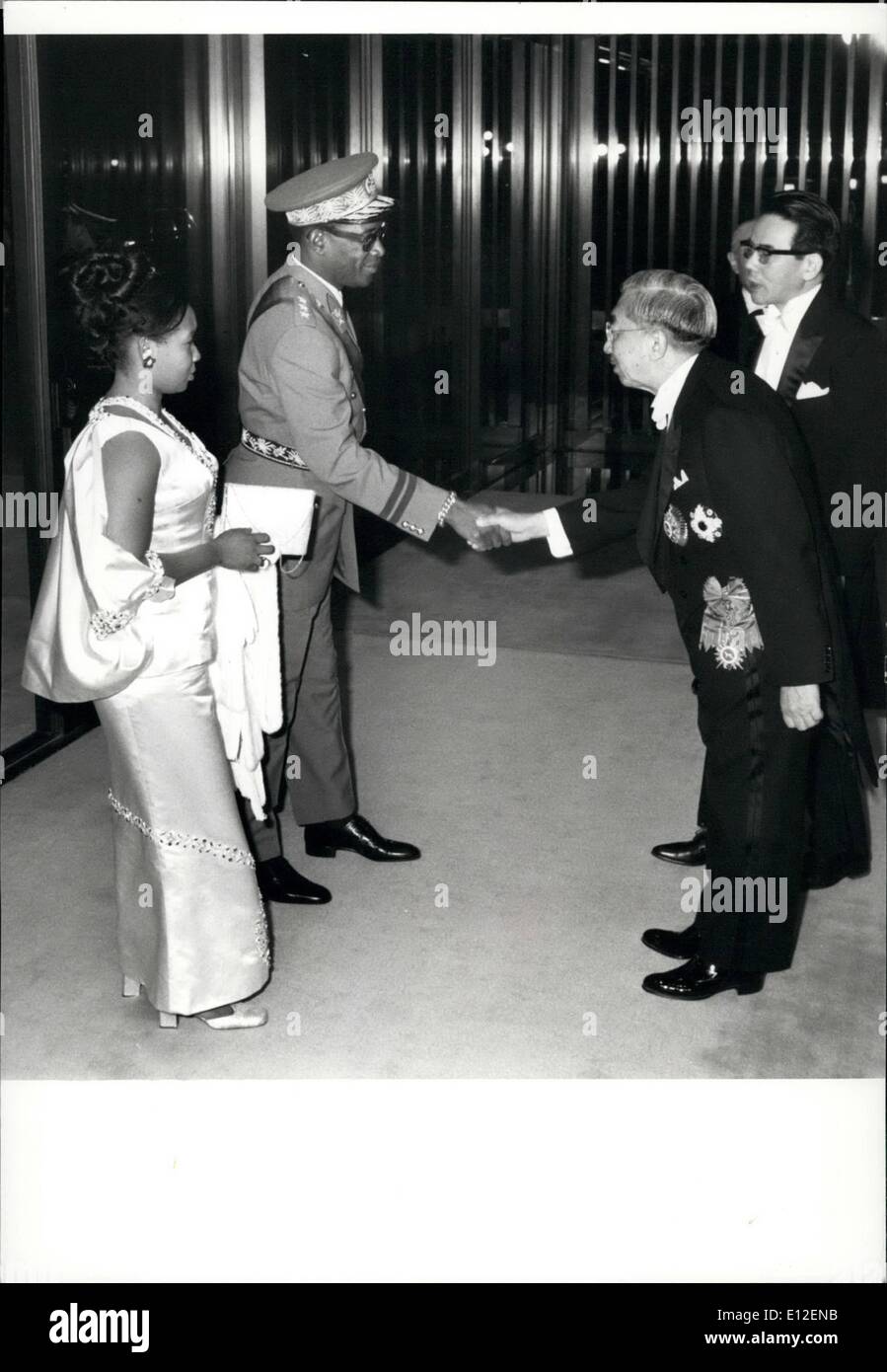
Zairean President Mobutu Sese Seko shakes hands with Emperor Hirohito in 1969 as part of the former’s visit to Japan, in truth he is there to ask for Hirohito’s approval for invading and conquering Rwanda, Burundi, and the Central African Empire. Hirohito replied by saying, “Do as you please”.
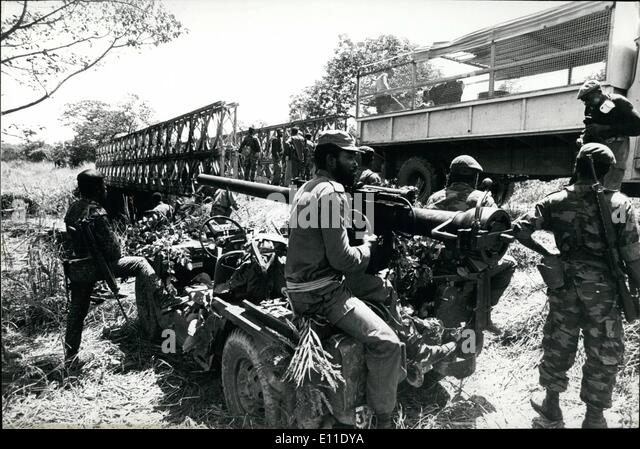
Soldiers of the Zaire State Army (ZSA) guard a bridge in the Central African Empire just inside the country from CAE forces during their invasion of the country in August 1970.

Americo-Congolese Martin Luther King Jr., the rising star of the Black Cheetah Party, gives a rousing speech in Kinshasa (formerly Leopoldville) in 1971.
Born in Atlanta, Georgia on January 15, 1929, Martin’s family would be one of the African-American families to take the Japanese up on their offer to emigrate to Africa as part of the ‘Back to Africa’ Program. They would settle down in the then-Democratic Republic of the Congo and become part of a new upper class for the newly independent nation – the Americo-Congolese.
Japan’s Back To Africa Program
In spring of 1949 Japan dusted off the 'Back to Africa' movement and offered African Americans a greater and better future in places such as Liberia, Sierra Leone, and the Congo, among others. The African-American émigrés would become the upper class of these new nations, or in Liberia’s case become part of the existing upper class of Americo-Liberians. This set the seeds for groups such as the Black Power Front in Sierra Leone, and the Black Cheetah Party in Zaire as millions of African Americans left North America.
Mobutu, Black Cheetahs, and Zaire

Mobutu Sese Seko. Mobutu is a Congolese general, founder of the Afro-fascist Black Cheetah Party (filled with African-American émigrés, called Americo-Congolese, and members of his own ethnic group the Ngbandi people), and dictatorial strongman of Zaire.
He was killed in a Japanese-backed coup d'état by Mobutu, his Black Cheetah Party, and the pro-Japan Congolese military (the military got a majority of its weaponry from Tokyo). Mobutu then gave the zaibatsu free reign in Katanga for a cut of the profits. In 1970, Mobutu would change the country's name to the State of Greater Zaire and proceeded to forcefully annex the Kingdom of Rwanda, the Republic of Burundi, and the Central African Empire.

Members of the Black Mambas, the paramilitary group of Mobutu's Black Cheetah Party or BCP for short.

A Zaibatsu mining operation in Katanga Province, circa 1958.

Zairean President Mobutu Sese Seko shakes hands with Emperor Hirohito in 1969 as part of the former’s visit to Japan, in truth he is there to ask for Hirohito’s approval for invading and conquering Rwanda, Burundi, and the Central African Empire. Hirohito replied by saying, “Do as you please”.

Soldiers of the Zaire State Army (ZSA) guard a bridge in the Central African Empire just inside the country from CAE forces during their invasion of the country in August 1970.

Americo-Congolese Martin Luther King Jr., the rising star of the Black Cheetah Party, gives a rousing speech in Kinshasa (formerly Leopoldville) in 1971.
Last edited:

1984 Atari 1400XLD the last of there 8-bit computers, before Introduktion of Atari 1800XLD with 16 Bit Motorola 68000 and the AMIGA chip-set
Last edited:
First paragraph originally posted by @Historyman 14. The title and the rest is originally mine.
It took the Imperial Japanese Army eleven gruelling months to stamp out Patton’s Army, all the while the Japanese referred to their enemies as “bandits” or “Mountain Men” and regarded them as such. The IJA not even bothering to send captured Americans to POW camps, where conditions were abysmally horrendous, but instead executed them on the spot. The Japanese finally got the upper hand on the Americans when General Patton was killed in a Japanese bombing raid while he was outside his bunker directing troops to re-take a ridge held by the IJA. With the loss of their general, the American troops lost the will to fight and surrendered. In a photograph that became forever immortalised in the memory of the Japanese people, a group of Japanese soldiers planted the Rising Sun flag on the peak of the Rockies, Mount Elbert.

Two men belonging to the 10th Mountain Division of the United States Army scale a side of a mountain.

Japanese troops advance up one of the mountains.
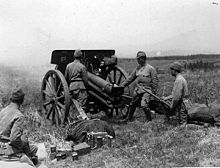
Type 91 howitzer firing at an American position.

Japanese bombers heading toward the Rockies.

General George S. Patton directing his men before being killed in a Japanese bombing raid.

Surrendering American soldiers (including some Native Americans) are marched out of a bunker in the Rockies, they’d all later be executed.
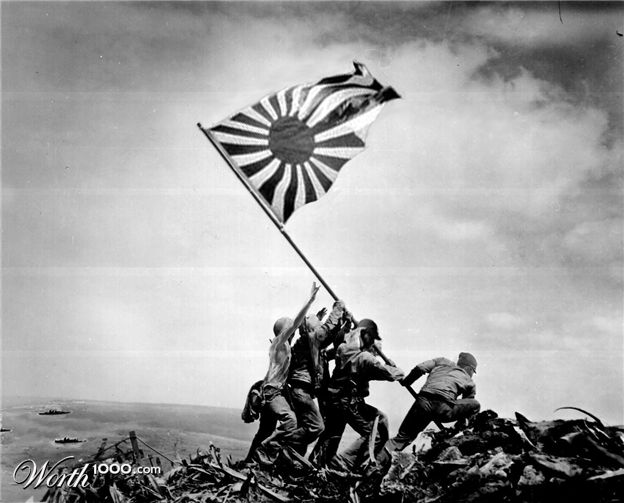
Victorious Japanese soldiers plant the Rising Sun on top of the summit of Mount Elbert.
The Last Stand of the Mountain Men

Remnants of the U.S. Army load a mortar somewhere in the Rockies.
In October 1946, elements of the U.S. Military (lead by General George S. Patton) refused to acknowledge the surrender and decided to keep up the fight – the Americans also built bunkers into the mountains in preparation for Japanese bombings. They made a heroic last stand in the Rocky Mountains.
Remnants of the U.S. Army load a mortar somewhere in the Rockies.
It took the Imperial Japanese Army eleven gruelling months to stamp out Patton’s Army, all the while the Japanese referred to their enemies as “bandits” or “Mountain Men” and regarded them as such. The IJA not even bothering to send captured Americans to POW camps, where conditions were abysmally horrendous, but instead executed them on the spot. The Japanese finally got the upper hand on the Americans when General Patton was killed in a Japanese bombing raid while he was outside his bunker directing troops to re-take a ridge held by the IJA. With the loss of their general, the American troops lost the will to fight and surrendered. In a photograph that became forever immortalised in the memory of the Japanese people, a group of Japanese soldiers planted the Rising Sun flag on the peak of the Rockies, Mount Elbert.

Two men belonging to the 10th Mountain Division of the United States Army scale a side of a mountain.

Japanese troops advance up one of the mountains.

Type 91 howitzer firing at an American position.
Japanese bombers heading toward the Rockies.

General George S. Patton directing his men before being killed in a Japanese bombing raid.

Surrendering American soldiers (including some Native Americans) are marched out of a bunker in the Rockies, they’d all later be executed.

Victorious Japanese soldiers plant the Rising Sun on top of the summit of Mount Elbert.
Last edited:
Richard Benfleet MP (LAB); Sheffield Hallam.
A Major in 1 RIFLES until he resigned his commission when selected as the Labour candidate to challenge Nick Clegg. Richard Benfleet, a graduate of the University of Sheffield, joined the Army at 20 and saw active service in Northern Ireland and Iraq. A descendent of the extinct Earldom of Benfleet in Essex, his family traces its history of military service to the Peninsular Wars.
He was first elected to the Commons in 2015 and joined the Shadow Defence team in 2017.
Deleted member 82792
North American actress Scarlett Johansson (originally from the City-State of New York, currently living in the Republic of Greater California) starring as cyborg heroine Major Motoko Kusanagi in the 2017 film adaptation of the popular Imperial Japanese manga Section 9. While many critics originally questioned the idea of having a westerner play one of Japan's most popular female fictional characters, Johansson's acting talent helped turned the film into a blockbuster smash, with higher then expected ticket sales throughout the Co-Prosparity Sphere and allied states. Recently the people of Japan had voted Ms Johansson as the Most Beautiful Western Woman of 2017.
Nice! However, if this ties in with the Imperial Japan posts I’ve made then I’ve got to tell you that’s it’s the Pacific States of America not the Republic of Greater California.
North American actress Scarlett Johansson (originally from the City-State of New York, currently living in the Republic of Greater California) starring as cyborg heroine Major Motoko Kusanagi in the 2017 film adaptation of the popular Imperial Japanese manga Section 9. While many critics originally questioned the idea of having a westerner play one of Japan's most popular female fictional characters, Johansson's acting talent helped turned the film into a blockbuster smash, with higher then expected ticket sales throughout the Co-Prosparity Sphere and allied states. Recently the people of Japan had voted Ms Johansson as the Most Beautiful Western Woman of 2017.
Deleted member 82792
No, it's a separate timeline.Nice! However, if this ties in with the Imperial Japan posts I’ve made then I’ve got to tell you that’s it’s the Pacific States of America not the Republic of Greater California.

Wehrmacht officers enter the Reichstag where the surrender terms are to be dictated by the victorious Japanese General Tadamichi Kuribayashi.
Mmkay. So what's with the British officer in the foreground?
Shit! I didn’t notice that! Well in any case, I changed it.Mmkay. So what's with the British officer in the foreground?
Last edited:
Share:



